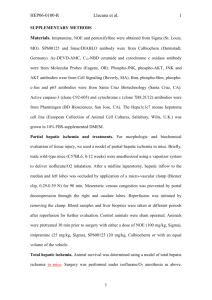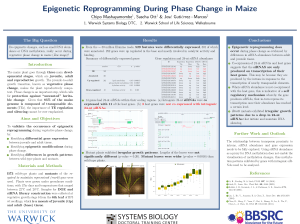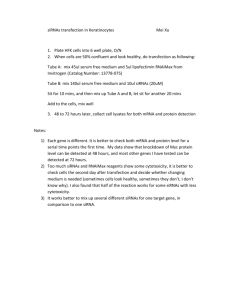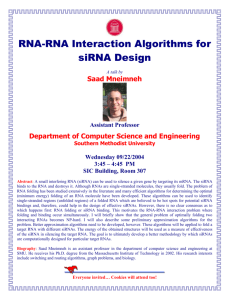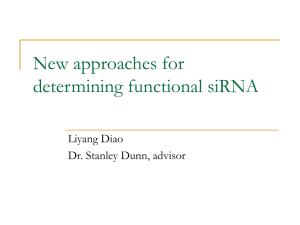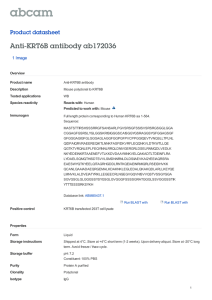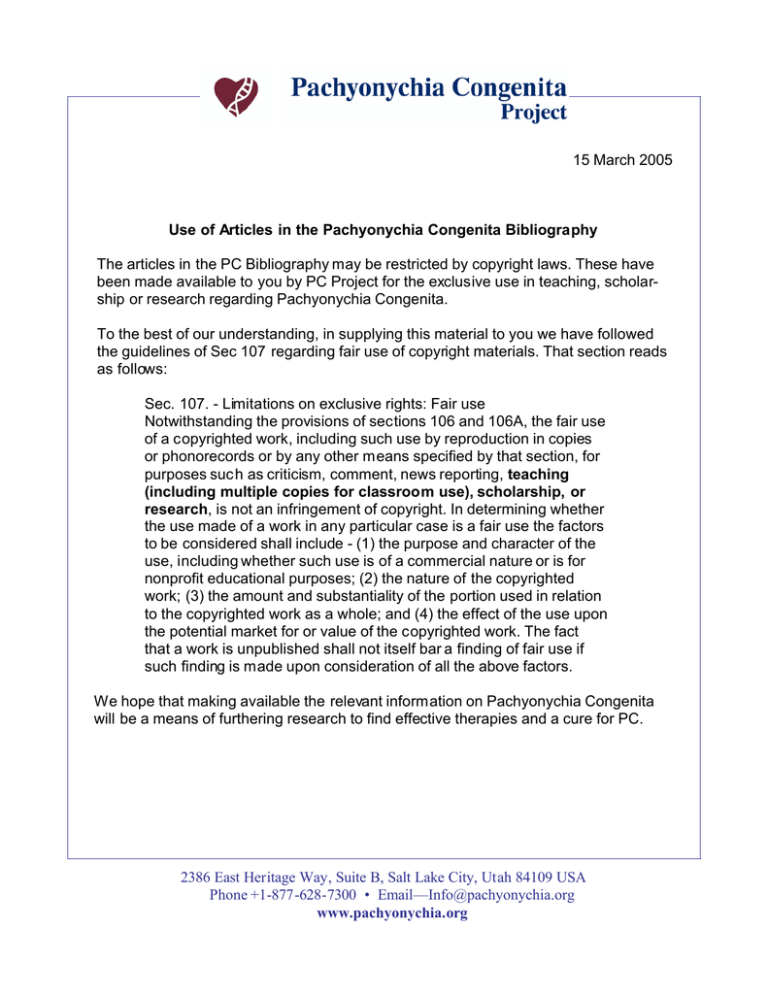
15 March 2005
Use of Articles in the Pachyonychia Congenita Bibliography
The articles in the PC Bibliography may be restricted by copyright laws. These have
been made available to you by PC Project for the exclusive use in teaching, scholarship or research regarding Pachyonychia Congenita.
To the best of our understanding, in supplying this material to you we have followed
the guidelines of Sec 107 regarding fair use of copyright materials. That section reads
as follows:
Sec. 107. - Limitations on exclusive rights: Fair use
Notwithstanding the provisions of sections 106 and 106A, the fair use
of a copyrighted work, including such use by reproduction in copies
or phonorecords or by any other means specified by that section, for
purposes such as criticism, comment, news reporting, teaching
(including multiple copies for classroom use), scholarship, or
research, is not an infringement of copyright. In determining whether
the use made of a work in any particular case is a fair use the factors
to be considered shall include - (1) the purpose and character of the
use, including whether such use is of a commercial nature or is for
nonprofit educational purposes; (2) the nature of the copyrighted
work; (3) the amount and substantiality of the portion used in relation
to the copyrighted work as a whole; and (4) the effect of the use upon
the potential market for or value of the copyrighted work. The fact
that a work is unpublished shall not itself bar a finding of fair use if
such finding is made upon consideration of all the above factors.
We hope that making available the relevant information on Pachyonychia Congenita
will be a means of furthering research to find effective therapies and a cure for PC.
2386 East Heritage Way, Suite B, Salt Lake City, Utah 84109 USA
Phone +1-877-628-7300 • Email—Info@pachyonychia.org
www.pachyonychia.org
DESC-1749; No of Pages 7
Journal of Dermatological Science (2008) xxx, xxx—xxx
www.intl.elsevierhealth.com/journals/jods
INVITED REVIEW ARTICLE
Therapeutic siRNAs for dominant genetic skin
disorders including pachyonychia congenita
Sancy A. Leachman a,*, Robyn P. Hickerson b, Peter R. Hull c,
Frances J.D. Smith d, Leonard M. Milstone e, E. Birgitte Lane f,
Sherri J. Bale g, Dennis R. Roop h, W.H. Irwin McLean d,
Roger L. Kaspar b,**
a
Department of Dermatology and Huntsman Cancer Institute, University of Utah, Salt Lake City,
UT, United States
b
TransDerm Inc., 2161 Delaware Avenue, Santa Cruz, CA 95060, United States
c
Department of Dermatology, Royal University Hospital, University of Saskatchewan,
Saskatchewan, Canada
d
Human Genetics Unit, Ninewells Hospital and Medical School, University of Dundee,
Dundee DD1 9SY, UK
e
Department of Dermatology, Yale University, New Haven, CT, United States
f
Institute of Medical Biology, Singapore 138665, Singapore
g
GeneDx, Gaithersburg, MD, United States
h
Department of Dermatology and Regenerative Medicine and Stem Cell Biology Program, University of
Colorado at Denver and Health Sciences Center, Aurora, CO, United States
Received 20 March 2008; accepted 2 April 2008
KEYWORDS
Pachyonychia
congenita;
Keratin;
Genodermatoses;
RNAi;
siRNA;
Gene therapy
Summary The field of science and medicine has experienced a flood of data and
technology associated with the human genome project. Over 10,000 human diseases
have been genetically defined, but little progress has been made with respect to the
clinical application of this knowledge. A notable exception to this exists for pachyonychia congenita (PC), a rare, dominant-negative keratin disorder. The establishment
of a non-profit organization, PC Project, has led to an unprecedented coalescence of
patients, scientists, and physicians with a unified vision of developing novel therapeutics for PC. Utilizing the technological by-products of the human genome project,
such as RNA interference (RNAi) and quantitative RT-PCR (qRT-PCR), physicians and
scientists have collaborated to create a candidate siRNA therapeutic that selectively
inhibits a mutant allele of KRT6A, the most commonly affected PC keratin. In vitro
investigation of this siRNA demonstrates potent inhibition of the mutant allele
and reversal of the cellular aggregation phenotype. In parallel, an allele-specific
* Corresponding author. Tel.: +1 801 585 1810.
** Corresponding author. Tel.: +1 831 420 1684.
E-mail addresses: sancy.leachman@hci.utah.edu (S.A. Leachman), roger.kaspar@transderminc.com (R.L. Kaspar).
0923-1811/$30.00 # 2008 Japanese Society for Investigative Dermatology. Published by Elsevier Ireland Ltd. All rights reserved.
doi:10.1016/j.jdermsci.2008.04.003
Please cite this article in press as: Leachman SA, et al., Therapeutic siRNAs for dominant genetic skin disorders
including pachyonychia congenita, J Dermatol Sci (2008), doi:10.1016/j.jdermsci.2008.04.003
DESC-1749; No of Pages 7
2
S.A. Leachman et al.
quantitative real-time RT-PCR assay has been developed and validated on patient
callus samples in preparation for clinical trials. If clinical efficacy is ultimately
demonstrated, this ‘‘first-in-skin’’ siRNA may herald a paradigm shift in the treatment
of dominant-negative genetic disorders.
# 2008 Japanese Society for Investigative Dermatology. Published by Elsevier Ireland
Ltd. All rights reserved.
Contents
1.
2.
3.
4.
5.
6.
Introduction . . . . . . . . . . . . . . . . . . . . . . . . . . . . . . . . . . . . . . . . . . . . . . . .
Pachyonychia congenita is an ideal ‘‘proof of principle’’ model for siRNA therapeutics .
Development of mutation and gene-specific siRNAs . . . . . . . . . . . . . . . . . . . . . . .
3.1. Identification of K6a N171K mutation-specific siRNAs . . . . . . . . . . . . . . . . . .
3.2. Identification of gene-specific siRNAs . . . . . . . . . . . . . . . . . . . . . . . . . . . .
Animal models relevant to studying dominant-negative disorders . . . . . . . . . . . . . .
PC clinical trial utilizing siRNA . . . . . . . . . . . . . . . . . . . . . . . . . . . . . . . . . . . .
Future perspectives . . . . . . . . . . . . . . . . . . . . . . . . . . . . . . . . . . . . . . . . . . .
Acknowledgements. . . . . . . . . . . . . . . . . . . . . . . . . . . . . . . . . . . . . . . . . . . .
References . . . . . . . . . . . . . . . . . . . . . . . . . . . . . . . . . . . . . . . . . . . . . . . . .
1. Introduction
The human genome project has provided accessible
and comprehensive documentation of the human
genome. This has greatly facilitated the development of new gene discovery technologies. It has also
spawned the field of functional genomics, which
attempts to assign functional relevance to copious
sequence data. One of the most successful functional genomics technologies yet developed involves
the use of small interfering RNAs (siRNAs) to interrogate the function of human genes. The capacity of
siRNA to specifically and potently block gene expression in vitro has led to the consideration of siRNA as
a candidate therapeutic agent as well. The continuing rapid pace of discovery and development in
genetics and genomics portends the advent of individualized medicine, in which (1) patient genetic
information can be rapidly analyzed, (2) disease
mutations can be identified and (3) mutation-specific siRNAs can be selected, synthesized, tested for
safety and efficacy, and efficiently delivered as
novel therapeutics. Emergence of a variety of
sequence-specific therapies [1] for ultra-rare,
non-lethal, dominant-negative skin disorders, such
as pachyonychia congenita (PC), would have been
unthinkable without the rapid and relatively inexpensive synthetic and analytic technologies that
developed along with the genome project.
A major task in the years ahead is the development of treatments for all dominant-negative disorders using findings from structural, functional and
genetic basic science investigation. One such disease-targeted treatment involves the use of siRNAs.
.
.
.
.
.
.
.
.
.
.
.
.
.
.
.
.
.
.
.
.
.
.
.
.
.
.
.
.
.
.
.
.
.
.
.
.
.
.
.
.
.
.
.
.
.
.
.
.
.
.
.
.
.
.
.
.
.
.
.
.
.
.
.
.
.
.
.
.
.
.
.
.
.
.
.
.
.
.
.
.
.
.
.
.
.
.
.
.
.
.
.
.
.
.
.
.
.
.
.
.
.
.
.
.
.
.
.
.
.
.
.
.
.
.
.
.
.
.
.
.
000
000
000
000
000
000
000
000
000
000
SiRNAs are a new class of RNA inhibitors that act via
the RNA-induced silencing complex (RISC) to specifically degrade target RNAs. Inhibition of gene
expression by siRNA is mediated by hybridized RNAs,
typically containing a 19 bp complementary region
with two nucleotide 30 overhangs (19 + 2 design),
that are sufficiently small so as to avoid immune
surveillance [2]. This mechanism is distinct from the
classical antisense activity of single-stranded oligonucleotides mainly with respect to the involvement
of RISC, which catalytically cleaves the target mRNA
and thereby exerts activity for a period of time
dictated by RISC turnover. Unlike antisense oligonucleotides, persistence of the siRNA within cells outside of the RISC is theoretically not required for
continued RNAi activity. Therefore, an intermittent
dosing schedule for the siRNA can be rationalized in
clinical trials.
2. Pachyonychia congenita is an ideal
‘‘proof of principle’’ model for siRNA
therapeutics
To date, 54 functional keratin genes have been
identified and mutations in 20 keratin genes have
been associated with human genetic disorders [3—
5]. Typically, the sites of these mutations lie in the
alpha helical domains involved in protein—protein
interactions. Since all known keratins act in pairs,
mutation of one member of the pair also affects the
function of the partner protein, resulting in disruption of higher-order intermediate filament formation or assembly kinetics [6]. Significant basic
Please cite this article in press as: Leachman SA, et al., Therapeutic siRNAs for dominant genetic skin disorders
including pachyonychia congenita, J Dermatol Sci (2008), doi:10.1016/j.jdermsci.2008.04.003
DESC-1749; No of Pages 7
Therapeutic siRNAs for dominant genetic skin disorders including pachyonychia congenita
scientific data regarding the molecular etiology of
keratinizing disorders have been available since the
mid-1990s. Although some therapeutic strategies
have been suggested from experimental work, no
therapeutic agents until now have reached the point
of clinical trial.
Pachyonychia congenita is a well-characterized
genetic disorder predominantly affecting nails and
skin, which is caused by mutations in keratins
KRT6A or KRT16 (PC-1, OMIM 167200) and KRT6B
or KRT17 (PC-2, OMIM 167210). The physical findings most commonly include grossly thickened
nails coupled with palmoplantar hyperkeratosis
[7,8]. The thickened fingernails are disfiguring
and hinder fine fingertip actions used in a multitude of tasks. Importantly, PC patients experience
severe incapacitating pain associated with the
plantar keratoderma (Fig. 1). This necessitates
significant lifestyle modification including the
use of wheelchairs or crutches, and regular pain
medication.
The discovery of PC as a keratin disorder followed a genetic linkage analysis study of a large
Scottish pedigree. This linkage study showed cosegregation of the disease with polymorphic markers within the type I keratin gene cluster at
17q12—q21 [9]. Subsequently, a heterozygous missense mutation was identified in the family in
KRT17 [10]. Simultaneously, a missense mutation
Fig. 1 Typical painful and debilitating plantar hyperkeratosis observed in a pachyonychia congenita patient harboring the K6a N171K mutation. Treatment with siRNA will
be by injection into the calluses.
3
Fig. 2 A schematic representation of the protein domain
organization common to all keratins. Four coiled coil
domains, 1A, 1B, 2A, 2B, are separated by non-helical
linkers, L1, L12 and L2. Shaded in red are the helix
boundary domains that are highly conserved in sequence
between all keratins. The majority of mutations identified
in PC (in K6a, K16, K6b, K17) fall within these domains.
The position of the most common amino acid mutated in
K6a, N171, is shown.
was detected in KRT16 in a sporadic case of PC-1
[10]. A second gene was shown to be associated
with PC-1 when mutations were identified in KRT6A
[11]. Some time later a mutation was detected in
KRT6B in an extended family with the PC-2 phenotype [12].
To date, there are published reports of 55 causative mutations responsible for PC in 108 independently ascertained families (www.interfil.org). The
gene most commonly mutated is KRT6A, and the
most common site of mutation is at position 171 in
the amino acid sequence (Fig. 2).
PC serves as a prototype indication for siRNAbased therapy. The molecular basis of PC is known
and the defective genes responsible have been
identified. In addition, many different keratins
are expressed in the epidermis and there is probable functional redundancy. SiRNA technology permits selective targeting of the dominant mutant
allele, potentially eliminating only the functionally disruptive version of the keratin. A further
advantage is the external location and focal nature of the plantar skin lesions permitting minimally invasive localized treatments to be
performed on patients. Localized siRNA therapy
for a skin disease also has a major advantage over
other tissue targets since the results of the therapeutic intervention can be directly observed and
if necessary sampled, a feature which recently
facilitated the first-in-man gene therapy grafting
of a junctional EB patient with a laminin mutation
[13].
Any advance in the development of siRNA-based
therapeutics for PC will likely be directly applicable to treatment of other dominant genodermatoses, as well as indirectly applicable to a much
larger number of human disorders that have dominant-negative etiology. Further, development of
methods for delivery of siRNA-based therapeutics
may have downstream benefit for treatment of
unrelated genetic disorders that also affect the
skin.
Please cite this article in press as: Leachman SA, et al., Therapeutic siRNAs for dominant genetic skin disorders
including pachyonychia congenita, J Dermatol Sci (2008), doi:10.1016/j.jdermsci.2008.04.003
DESC-1749; No of Pages 7
4
S.A. Leachman et al.
3. Development of mutation and genespecific siRNAs
In PC, two approaches to the development of siRNAs
have been undertaken. The first is the development
of mutation specific siRNAs, which have the disadvantage of limiting the number of families who could
be treated but are highly specific. The second
approach was directed at developing gene specific
siRNAs that simultaneously target both wildtype and
mutant genes.
3.1. Identification of K6a N171K
mutation-specific siRNAs
Several viable approaches are available to identify
optimal siRNAs for targeting mutant mRNAs in dominant-negative diseases. A rational approach, taking
advantage of existing algorithms that predict good
target sites as well as the site most likely to yield
discrimination can be employed. Alternatively, all
possible siRNAs targeting the mutation site can be
prepared (sequence walk) and tested, assuring that
all possible effective siRNAs are identified. Both
approaches have been used with success [14—16]
and a combination of the two may be most effective,
eliminating those sequences that are known to
be ineffective or non-discriminating. Efficient and
effective screening requires an assay that will quickly
and accurately identify suitable candidates. One
approach is to make bicistronic constructs, in which
the mutant (and wildtype as control) is linked to a
reporter construct such as a fluorescent protein or
firefly luciferase and cloned into a plasmid expression
vector ([14] and data not shown). The effectiveness of
the candidate siRNAs can then be scored by fluorescence or luciferase assay following plasmid co-transfection with candidate siRNAs. Using this type of
approach, we identified K6a.513a.12, an siRNA that
has no effect on wildtype K6a expression in tissue
culture or animal studies, but silences the mutant
form containing a single nucleotide change [14].
The single nucleotide specificity of siRNA treatment can be readily observed by linking wildtype
and mutant targeted cDNAs to tags such as fluorescent proteins. Fig. 3A shows the intermediate
filaments formed following transfection of expression plasmids containing KRT6A wildtype cDNA
linked to plum fluorescent protein as well as mutant
KRT6A linked to yellow fluorescent protein (YFP),
which results in aggregates of mutant protein. Cotransfection with differentially tagged wildtype
(plum) and mutant (YFP) K6a expression constructs
allows visualization of the distinctly tagged wildtype
or mutant keratin 6a (K6a) proteins, which can be
selectively inhibited with siRNAs that are specific to
either the wildtype or mutant forms of KRT6A mRNA
(Fig. 3B), thereby demonstrating the single nucleotide specificity of the siRNA agents. The specificity
of the K6a.513a.12 siRNA is further demonstrated by
inhibition of mutant KRT6A mRNA and not wildtype
mRNA in immortalized keratinocytes derived from a
K6a N171K patient biopsy (Fig. 4).
While effective siRNAs targeting the N171K mutation were readily identified, other mutations may be
more problematic and effective siRNAs may be more
difficult to identify. The rapid progress of siRNA
development, however, suggests that even difficult
sites may be amenable to targeting, by modification
of one of both strands in the siRNA molecule. For
example, modification of the antisense strand to
facilitate stronger hybridization to the target may
allow tuning to specific mutation sites [15].
3.2. Identification of gene-specific siRNAs
The overlapping structure and function of the KRT6A
and KRT6B genes, as well as studies of KRT6A knockout
mice [17—19], strongly suggest that reduction or elimination of K6a expression can be compensated for by
K6b or other keratins. Thus, siRNAs targeting both the
mutant and wildtype forms of K6a, may be a viable
approach to treating PC. We have recently identified
siRNAs that specifically block expression of both wildtype and mutant forms of K6a with no effect on
homologous keratin gene expression such as K6b [16].
Comparison of the DNA sequences of the cDNAs
encoding human KRT6A (GenBank RefSeq accession
no. NM_005554) and KRT6B (GenBank RefSeq accession no. NM_005555) revealed that only a few isolated
bases can distinguish these two genes in terms of their
protein-encoding sequences. However, these two
genes do differ significantly in their non-coding 30 UTR
UTR sequences. Using the Dharmacon siDESIGN center, four inhibitors were designed within the 30 UTR of
K6a that were predicted to inhibit KRT6A expression
without affecting the expression of KRT6B or other
type II keratin genes due to significant sequence
differences. Using a variety of biochemical assays,
three of these siRNA reagents were shown to potently
and specifically inhibit K6a expression in cell culture
systems, where they could essentially knock out K6a
at very low concentrations [16]. One of these inhibitors was also shown to inhibit K6a reporter gene
expression in vivo using an animal model system [16].
4. Animal models relevant to studying
dominant-negative disorders
The parallel mouse and human genome projects have
greatly facilitated logical construction of animal
Please cite this article in press as: Leachman SA, et al., Therapeutic siRNAs for dominant genetic skin disorders
including pachyonychia congenita, J Dermatol Sci (2008), doi:10.1016/j.jdermsci.2008.04.003
DESC-1749; No of Pages 7
Therapeutic siRNAs for dominant genetic skin disorders including pachyonychia congenita
5
Fig. 3 Ability of siRNAs to specifically target the single nucleotide KRT6A N171K mutation responsible for the dominant
disorder pachyonychia congenita. (A) Human PLC hepatoma cells were transfected with wildtype KRT6A fused to plum
fluorescent protein or alternatively N171K mutant KRT6A fused to yellow fluorescent protein (YFP) and visualized by
fluorescence microscopy [14]. (B) Co-transfection of tagged mutant (YFP) and wildtype (plum) KRT6A expression plasmids
with siRNA. Co-transfection with non-specific control (NSC4) siRNA had no effect on plasmid expression with both plumcolored filaments (wildtype K6a) or yellow/green aggregates (N171K mutant K6a) observed. Addition of mutant-specific
siRNA (K6a.513a.12) blocked mutant K6a expression along with its YFP tag, resulting in only wildtype expression, which leads
to intermediate filament formation (plum coloration). As a further control, cells were treated with siRNA specific to the
wildtype form (K6a.513c.12), resulting in no filaments being formed and only yellow/green (from YFP) aggregates observed.
models. Comparison of the human and mouse genome
sequences revealed that only about 300 human genes
do not have a murine ortholog [20], facilitating the
rapid generation of knockout or knock-in mutant
mice corresponding to most human genes. In the case
of the keratin-related genodermatoses, the most
useful and realistic models are mice in which dominant-negative mutations, equivalent to those commonly found in human patients, can be activated in
the epidermis by topical application of a small-molecule inducer [21,22]. These revolutionary mice allow
induction of epidermal fragility phenotypes in small
regions of the skin to allow the study of pathogenetic
mechanisms and therapy systems, without major
distress to the animal or lethality. Analogous inducible PC mice are under development currently.
5. PC clinical trial utilizing siRNA
As discussed above, PC is an ultra-rare disorder and
current treatment modalities primarily center on
symptomatic relief. Recent registry data suggests
that the incidence of PC is likely to be on the order
of a few thousand individuals worldwide (see
www.pachyonychia.org and [23]).
The development of the potent and exquisitely
selective siRNA targeting N171K mutant KRT6A
mRNA discussed above has created the opportunity
to undertake the first siRNA clinical trial (initiated
early 2008) for any skin disorder. This first trial
investigates the safety and tolerability of intralesional injections of siRNA into PC patient calluses.
The study will be a split-body and double-blinded
investigation, injecting drug into one foot and vehicle into a matched callus on the other foot of a PC
patient. The primary purpose of the study is to
assess dose safety and tolerance of an increasing
volume and concentration of siRNA.
A secondary objective is to evaluate patients for
any signs of efficacy at the injection site (and elsewhere on the skin). Multiple measures of efficacy
will be assessed including clinical examination, subjective patient scoring systems of pain and quality of
life, and a state-of-the-art real-time RT-PCR assay
that quantitatively distinguishes wildtype and
mutant keratin mRNAs in callus shavings (Hickerson,
Leachman, et al., in preparation).
Please cite this article in press as: Leachman SA, et al., Therapeutic siRNAs for dominant genetic skin disorders
including pachyonychia congenita, J Dermatol Sci (2008), doi:10.1016/j.jdermsci.2008.04.003
DESC-1749; No of Pages 7
6
S.A. Leachman et al.
lored and individualized medicine. If this siRNA
proves effective in the treatment of PC, it may herald
the onset of tailored siRNA therapeutics for any
number of dominant skin diseases as well as other
disorders. If efficacy is proven, siRNA agents may be a
new class of drug with the potential to cause a
paradigm shift in the treatment of dominant-negative genetic disorders.
Acknowledgements
Fig. 4 Mutant-specific siRNA potently reduces mutant
K6a mRNA levels without affecting wildtype levels in
immortalized keratinocytes prepared from a PC patient.
PC-10_K6a_N171K cells (immortalized keratinocytes prepared from a K6a N171K PC patient skin biopsy) were
treated with K6a.513a.12 (targets N171K mutant mRNA)
or control irrelevant siRNA (targets EGFP) at time 0 h. At
the indicated timepoints, RNA was isolated, reversed
transcribed and the resulting cDNA subjected to real-time
qRT-PCR analysis (Hickerson, Leachman, et al., manuscript in preparation) using custom gene expression assays
for wildtype and mutant K6a (GAPDH gene expression
assay was used as the endogenous control). Normalized
mutant K6a expression divided by wildtype K6a expression
is plotted for each sample.
The Pachyonychia Congenita Project (PC Project,
see www.pachyonychia.org) has been critically
instrumental in effectively organizing an international group of PC patients, patient advocates, and
the International PC Consortium (IPCC), a group of
physicians and scientists who have agreed to work
together to develop PC therapeutics. The authors
thank PC Project, and in particular the director,
Mary Schwartz, for unwavering support of this project and for providing the patient photograph. We
are grateful to PC patients for their strong support
and also thank IPCC members for stimulating discussion and insights. Finally, we thank Roger Tsien
(UC San Diego) for providing the plum fluorescent
protein construct and Devin Leake (Thermo Scientific, Dharmacon Products) for providing siRNAs.
6. Future perspectives
Conflict of interest
The transition of siRNA agents into routine clinical use
is on the horizon. To date, only a handful of siRNA
therapeutics (including those developed for macular
degeneration and respiratory syncytial virus) have
entered clinical trials and none has yet obtained FDA
approval [24—26]. Here we report on the progress of a
new siRNA entering clinical trials in PC patients with
the KRT6A N171K mutation, with a gene-specific
KRT6A siRNA study possibly to follow. This is the
first-in-man siRNA therapeutic trial for a skin indication and the first siRNA to target a gene mutation. In
the case of PC, the rapid trajectory of the siRNA
inhibitors into clinical trials has only been made
possible by the strength of the basic scientific knowledge and technologies resulting from the human
genome project (and related efforts). The clinical
trial with this agent will represent an important
proof-of-principle human experiment, rigorously
designed with quantifiable endpoints to test whether
this siRNA therapeutic is not only safe, but also holds
promise in the treatment of this disorder. The potential for specificity in the design of these siRNA agents
offers unprecedented potential in the field of tai-
Drs. Smith, McLean, Kaspar, and Hickerson have filed
a patent related to treatment of PC with siRNA
therapeutics. Dr. Leachman is independent of any
commercial funder and has had full access to all of
the data in the study and takes responsibility for the
integrity of the data and the accuracy of the data
analysis.
References
[1] Lewin AS, Glazer PM, Milstone LM. Gene therapy for autosomal dominant disorders of keratin. J Invest Dermatol Symp
Proc 2005;10:47—61.
[2] Elbashir SM, Harborth J, Lendeckel W, Yalcin A, Weber K,
Tuschl T. Duplexes of 21-nucleotide RNAs mediate RNA
interference in cultured mammalian cells. Nature 2001;
411:494—8.
[3] Hesse M, Magin TM, Weber K. Genes for intermediate filament proteins and the draft sequence of the human genome:
novel keratin genes and a surprisingly high number of pseudogenes related to keratin genes 8 and 18. J Cell Sci
2001;114:2569—75.
[4] Hesse M, Zimek A, Weber K, Magin TM. Comprehensive
analysis of keratin gene clusters in humans and rodents.
Eur J Cell Biol 2004;83:19—26.
Please cite this article in press as: Leachman SA, et al., Therapeutic siRNAs for dominant genetic skin disorders
including pachyonychia congenita, J Dermatol Sci (2008), doi:10.1016/j.jdermsci.2008.04.003
DESC-1749; No of Pages 7
Therapeutic siRNAs for dominant genetic skin disorders including pachyonychia congenita
[5] Schweizer J, Bowden PE, Coulombe PA, Langbein L, Lane EB,
Magin TM, et al. New consensus nomenclature for mammalian keratins. J Cell Biol 2006;174:169—74.
[6] Letai A, Coulombe PA, McCormick MB, Yu QC, Hutton E,
Fuchs E. Disease severity correlates with position of keratin
point mutations in patients with epidermolysis bullosa simplex. Proc Natl Acad Sci USA 1993;90:3197—201.
[7] Leachman SA, Kaspar RL, Fleckman P, Florell SR, Smith FJD,
McLean WHI, et al. Clinical and pathological features of
pachyonychia congenita. J Invest Dermatol Symp Proc
2005;10:3—17.
[8] Smith FJD, Kaspar RL, Schwartz ME, McLean WHI, Leachman
SA, Pachyonychia congenita. GeneReviews; 2006. www.
genetests.org/profiles/pc.
[9] Munro CS, Carter S, Bryce S, Hall M, Rees JL, Kunkeler L,
et al. A gene for pachyonychia congenita is closely linked to
the keratin gene cluster on 17q12—q21. J Med Genet
1994;31:675—8.
[10] McLean WH, Rugg EL, Lunny DP, Morley SM, Lane EB, Swensson O, et al. Keratin 16 and keratin 17 mutations cause
pachyonychia congenita. Nat Genet 1995;9:273—8.
[11] Bowden PE, Haley JL, Kansky A, Rothnagel JA, Jones DO,
Turner RJ. Mutation of a type II keratin gene (K6a) in
pachyonychia congenita. Nat Genet 1995;10:363—5.
[12] Smith FJD, Jonkman MF, van Goor H, Coleman C, Covello SP,
Uitto J, et al. A mutation in human keratin K6b produces a
phenocopy of the K17 disorder pachyonychia congenita type
2. Hum Mol Genet 1998;7:1143—8.
[13] Mavilio F, Pellegrini G, Ferrari S, Di Nunzio F, Di Iorio E,
Recchia A, et al. Correction of junctional epidermolysis
bullosa by transplantation of genetically modified epidermal
stem cells. Nat Med 2006;12:1397—402.
[14] Hickerson RP, Smith FJ, Reeves RE, Contag CH, Leake D,
Leachman SA, et al. Single-nucleotide-specific siRNA targeting in a dominant-negative skin model. J Invest Dermatol
2008;128:594—605.
[15] Schwarz DS, Ding H, Kennington L, Moore JT, Schelter J,
Burchard J, et al. Designing siRNA that distinguish between
genes that differ by a single nucleotide. PLoS Genet
2006;2:e140.
[16] Smith FJ, Hickerson RP, Sayers JM, Reeves RE, Contag CH,
Leake D, et al. Development of therapeutic siRNAs for
pachyonychia congenita. J Invest Dermatol 2008;128:
50—8.
[17] Wojcik SM, Bundman DS, Roop DR. Delayed wound healing
in keratin 6a knockout mice. Mol Cell Biol 2000;20:
5248—55.
[18] Wojcik SM, Longley MA, Roop DR. Discovery of a novel murine
keratin 6 (K6) isoform explains the absence of hair and nail
defects in mice deficient for K6a and K6b. J Cell Biol
2001;154:619—30.
[19] Wong P, Colucci-Guyon E, Takahashi K, Gu C, Babinet C,
Coulombe PA. Introducing a null mutation in the mouse
K6alpha and K6beta genes reveals their essential structural
role in the oral mucosa. J Cell Biol 2000;150:921—8.
[20] Waterston RH, Lindblad-Toh K, Birney E, Rogers J, Abril JF,
Agarwal P, et al. Initial sequencing and comparative analysis
of the mouse genome. Nature 2002;420:520—62.
[21] Cao T, Longley MA, Wang XJ, Roop DR. An inducible mouse
model for epidermolysis bullosa simplex: implications for
gene therapy. J Cell Biol 2001;152:651—6.
7
[22] Arin MJ, Longley MA, Wang XJ, Roop DR. Focal activation of a
mutant allele defines the role of stem cells in mosaic skin
disorders. J Cell Biol 2001;152:645—9.
[23] Kaspar RL. Challenges in Developing Therapies for Rare
Diseases including Pachyonychia Congenita. The Journal
of Investigative Dermatology Symposium Proceedings
2005;10:62—6.
[24] de Fougerolles A, Vornlocher HP, Maraganore J, Lieberman J.
Interfering with disease: a progress report on siRNA-based
therapeutics. Nat Rev Drug Discov 2007;6:443—53.
[25] Kim DH, Rossi JJ. Strategies for silencing human disease
using RNA interference. Nat Rev Genet 2007;8:173—84.
[26] Dykxhoorn DM, Lieberman J. Knocking down disease with
siRNAs. Cell 2006;126:231—5.
Sancy A. Leachman, MD, PhD, is a
tenured associate professor in the
Department of Dermatology at the University of Utah School of Medicine, chairperson of the International Pachyonychia
Congenita Consortium, and Medical
Director of PC-Project, a non-profit public charity founded to treat pachyonychia
congentia. She studies genetic skin disorders with an emphasis on hereditary
melanoma and pachyonychia congenita. Her research focuses
on the application of basic science knowledge and state-ofthe-art technology to treat these genetic skin disorders. In addition to her work on pachyonychia congenita, Dr. Leachman is
director of the Melanoma and Cutaneous Oncology Program at
Huntsman Cancer Institute and directs the Tom C. Mathews Jr.
Familial Melanoma Research Program, which is dedicated to
investigation of the familial melanoma syndrome. Before joining
Huntsman Cancer Institute, Leachman was a resident and postdoctoral fellow in dermatology at Yale University School of
Medicine, where she worked on a DNA-based vaccination technology to prevent and treat papillomavirus-induced squamous
cell carcinoma. She earned her MD and PhD from the University of
Texas Southwestern Medical School, and was awarded the prestigious Doris Duke Clinical Scientist Development Award in 2000.
Roger L. Kaspar, PhD, is the CEO and
scientific founder of TransDerm, a company focused on developing novel therapeutics, including inhibitors based on
RNA interference (RNAi) technology, for
skin disorders. Dr. Kaspar received his
doctorate from the University of
Washington (Seattle) in biochemistry
(David Morris) and performed post-doctoral work at M.I.T. (Lee Gehrke), Stanford University (Helen Blau), and Chiba University (Tomohito
Kakegawa). After serving on the faculty at Brigham Young University (Utah) in the Department of Chemistry and Biochemistry,
he left academia to work at SomaGenics, prior to founding
TransDerm. Drawing on his expertise in the area of post-transcriptional gene regulation, his current efforts are focused on
designing highly potent and selective therapeutic siRNAs that
target disease-causing genes in skin disorders, including pachyonychia congenita, and investigating methods to efficiently deliver
agents such as siRNAs to appropriate skin cells.
Available online at www.sciencedirect.com
Please cite this article in press as: Leachman SA, et al., Therapeutic siRNAs for dominant genetic skin disorders
including pachyonychia congenita, J Dermatol Sci (2008), doi:10.1016/j.jdermsci.2008.04.003

